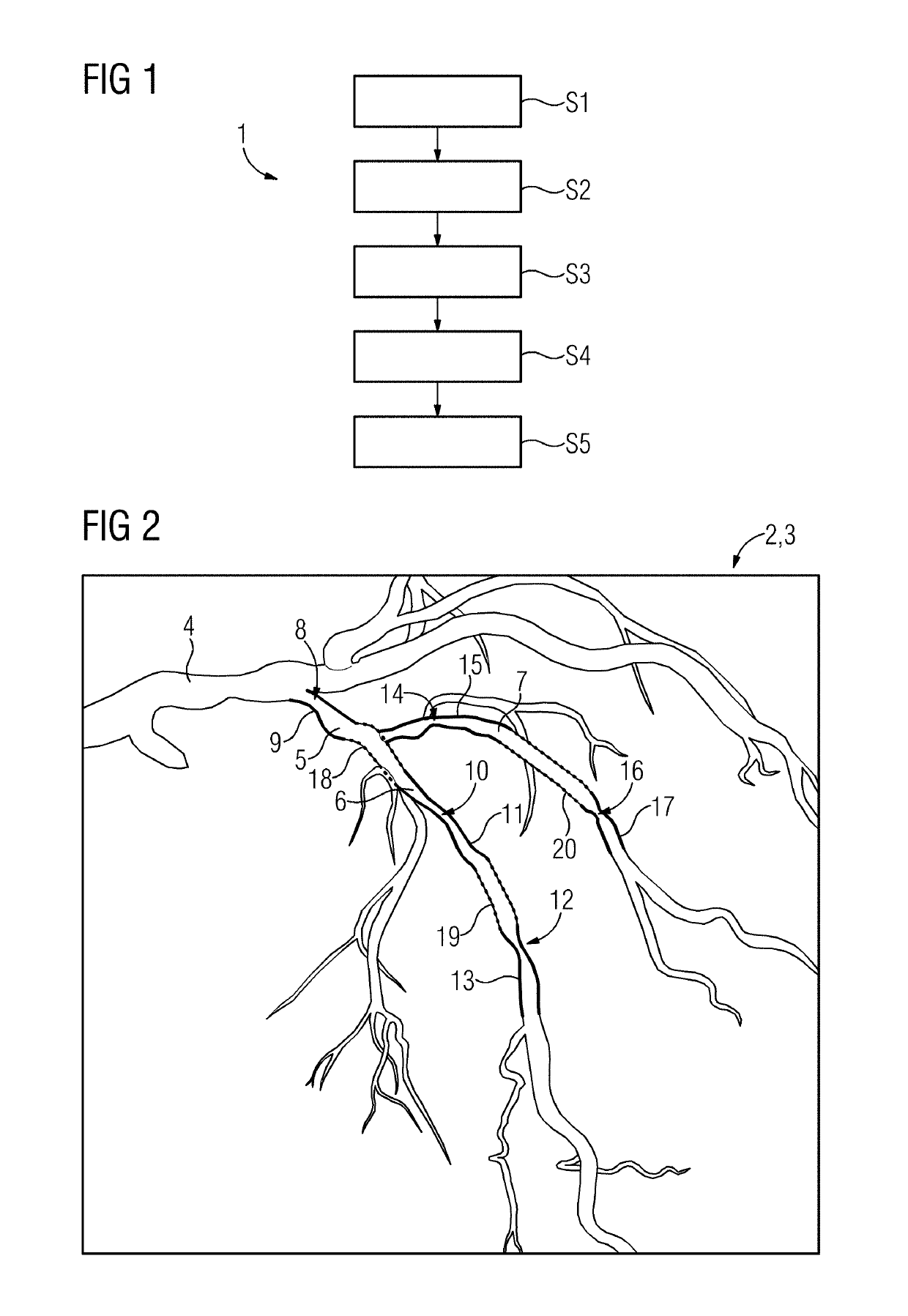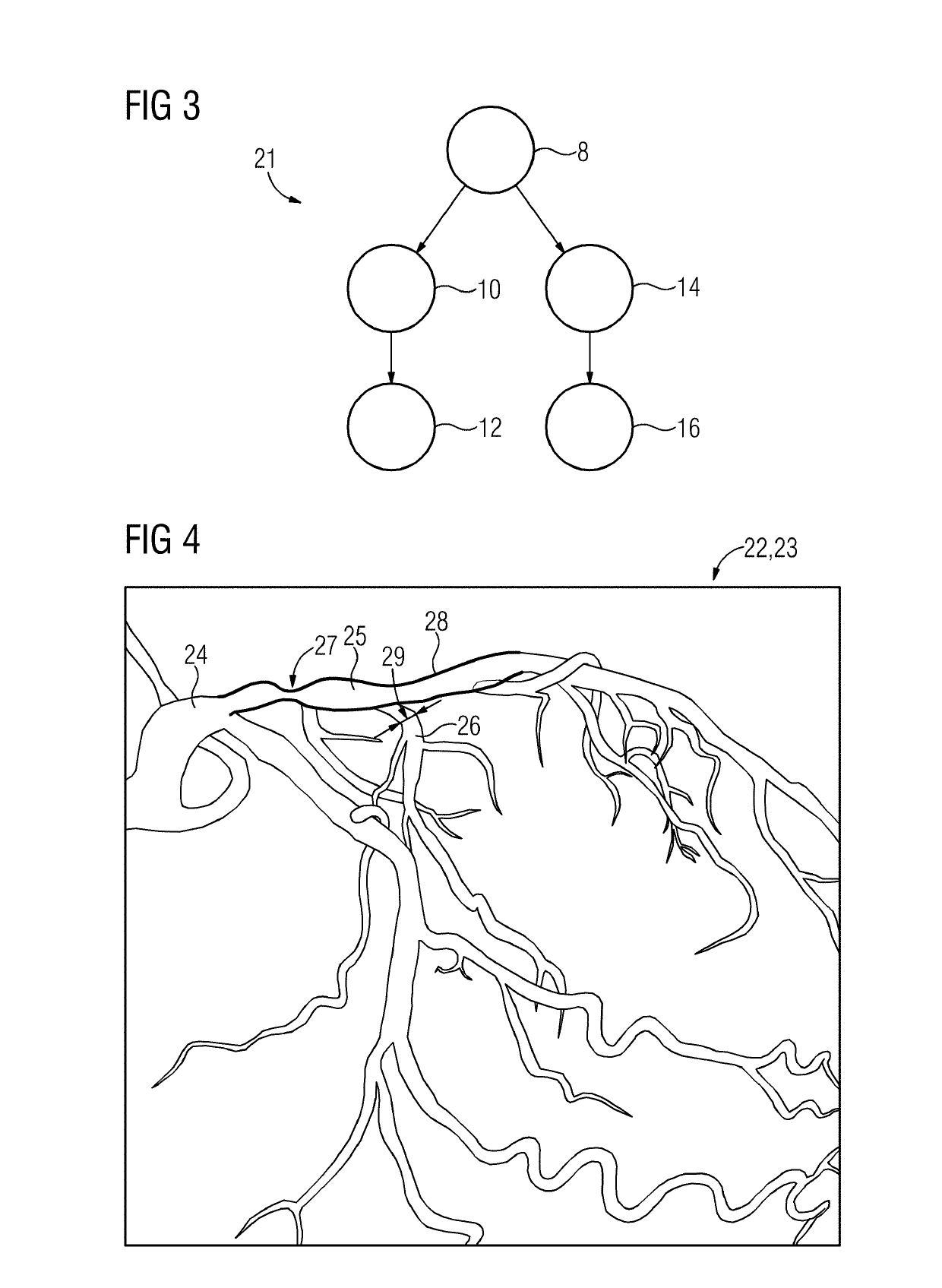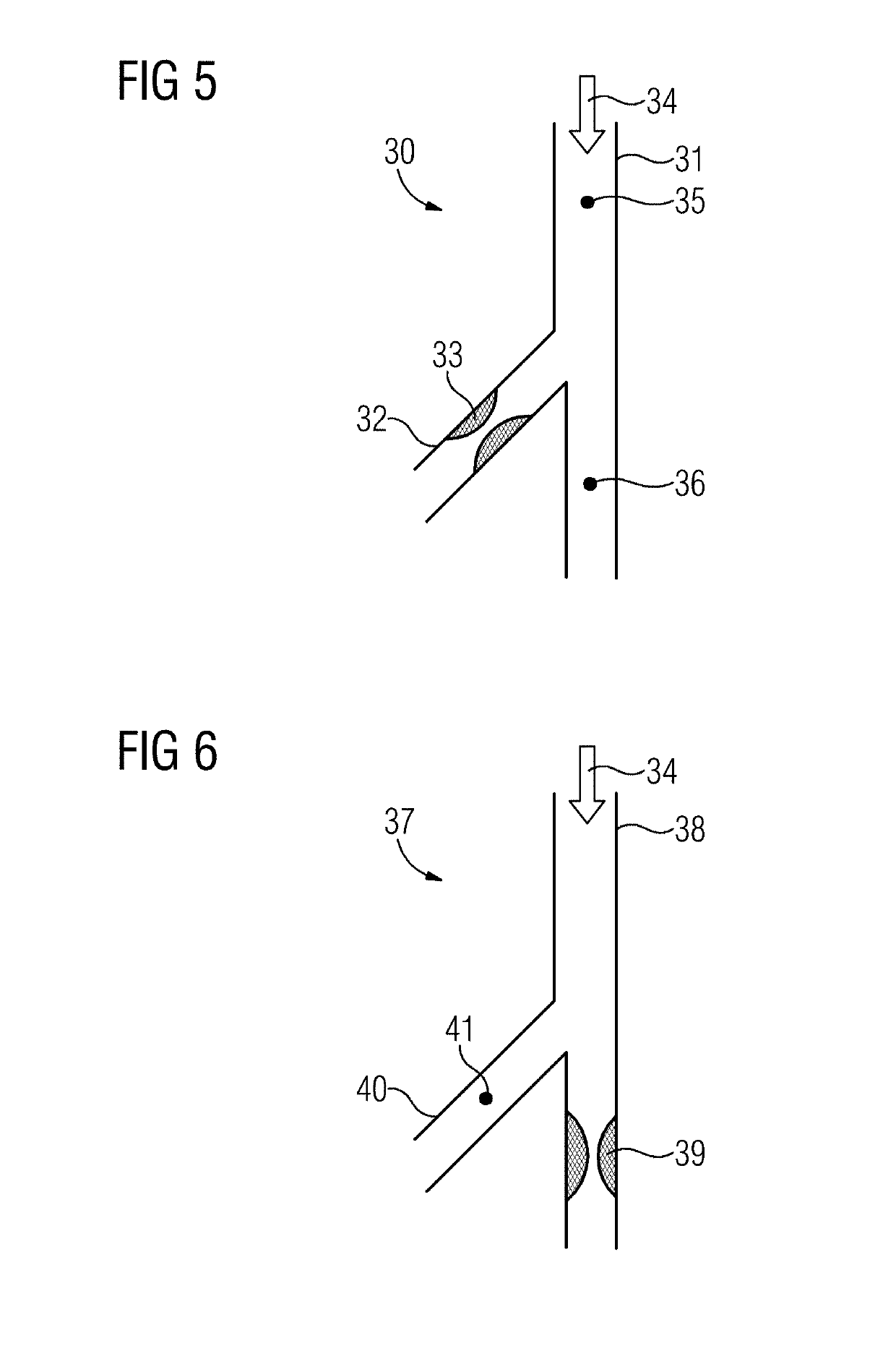Method and system for assessing a haemodynamic parameter
a haemodynamic parameter and parameter technology, applied in the field of assessing haemodynamic parameters, can solve the problems of inability to reconstruct or characterize neighboring vessels, and inability to accurately assess the physiological significance of lesions in coronary angiography. achieve the effect of accurate assessment of haemodynamic parameters, accurate confidence value of assessment, and high confidence valu
- Summary
- Abstract
- Description
- Claims
- Application Information
AI Technical Summary
Benefits of technology
Problems solved by technology
Method used
Image
Examples
Embodiment Construction
[0052]FIG. 1 schematically shows a flow chart 1 of one embodiment of a method for assessing a haemodynamic parameter such as a fractional flow reserve (FFR) based on multiple angiographic images. In a process act S1, the angiographic images of a vascular region of interest are acquired. This may include actually taking the images using a medical imaging system or device and / or may include accessing a data storage device on which the angiographic images are stored. The region of interest may contain or include multiple different sub-regions, parts, or portions. The angiographic images may contain or enable one or more complete, partial, or incomplete views of each of these parts or portions.
[0053]In a process act S2, a 3D representation or reconstruction of at least a first portion of the region of interest is obtained based on the angiographic images. Geometric features are extracted from complete or partial views of a respective anatomical structure of interest (e.g., from the 3D r...
PUM
 Login to View More
Login to View More Abstract
Description
Claims
Application Information
 Login to View More
Login to View More - R&D
- Intellectual Property
- Life Sciences
- Materials
- Tech Scout
- Unparalleled Data Quality
- Higher Quality Content
- 60% Fewer Hallucinations
Browse by: Latest US Patents, China's latest patents, Technical Efficacy Thesaurus, Application Domain, Technology Topic, Popular Technical Reports.
© 2025 PatSnap. All rights reserved.Legal|Privacy policy|Modern Slavery Act Transparency Statement|Sitemap|About US| Contact US: help@patsnap.com



